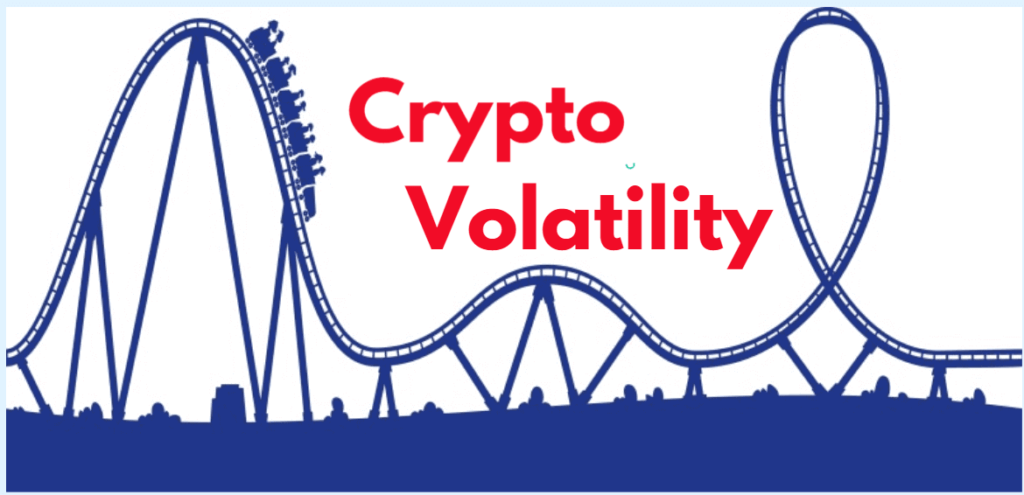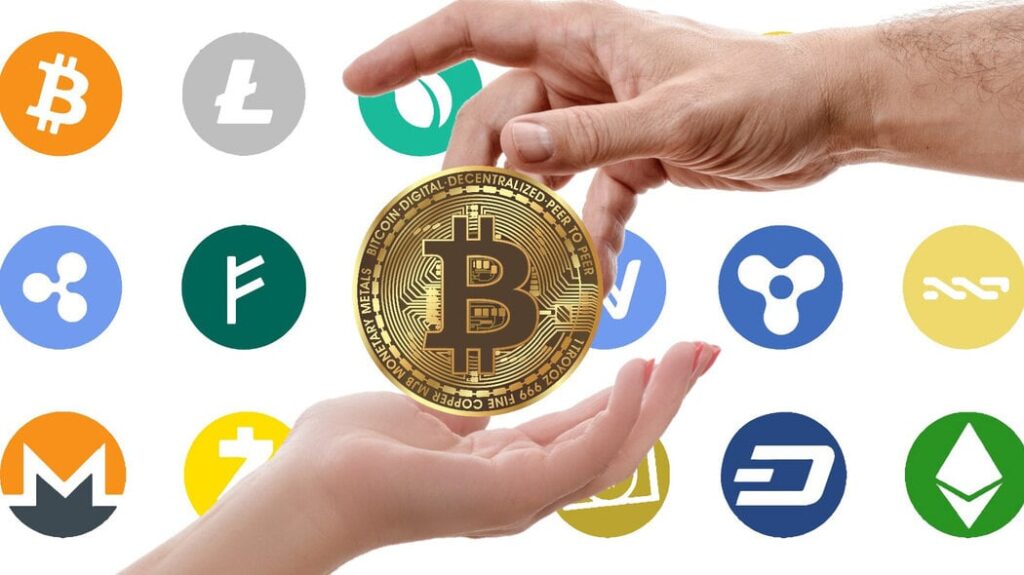Understanding Bitcoin: The Rise of Digital Currency

Table of Contents
In recent years, the global financial landscape has witnessed a remarkable transformation with the emergence of cryptocurrencies, spearheaded by the revolutionary digital currency known as Bitcoin. Understanding Bitcoin and its meteoric rise to prominence has become essential in comprehending the fundamental shifts occurring in the realm of finance and economics.
As a decentralized, peer-to-peer digital currency, Bitcoin has disrupted traditional monetary systems and captured the imaginations of investors, technologists, and enthusiasts worldwide. This essay delves into the genesis of Bitcoin, its underlying technology, the factors fueling its unprecedented growth, and the potential implications it holds for the future of money and financial transactions.
Introduction to Understanding Bitcoin and its Origins
In the fast-evolving landscape of financial technology, Bitcoin has emerged as a groundbreaking digital currency that has captured the imagination of people around the world. Created in 2009 by an unknown person or group using the pseudonym Satoshi Nakamoto, Bitcoin was introduced as an open-source software, allowing for peer-to-peer transactions without the need for intermediaries like banks or financial institutions. It’s decentralized nature and innovative blockchain technology has since made it a pioneer in the world of cryptocurrencies, revolutionizing the way we perceive and use money.
How does Bitcoin work?
At its core, Understanding Bitcoin operates on a decentralized network of computers, collectively known as nodes, which work together to validate and record transactions. The key concept that underpins Bitcoin’s functionality is the blockchain, a public ledger that chronologically records all transactions made on the network. Transactions are grouped together into blocks, and each block is then cryptographically linked to the previous one, creating an immutable chain of transactional history.
Blockchain technology in Bitcoin
Blockchain technology is the backbone of Bitcoin, serving as a secure and transparent method of recording and verifying transactions. The blockchain consists of a series of blocks, each containing a unique set of transactions. Once a block is added to the chain, it cannot be altered, ensuring the integrity of the entire transaction history.
The decentralized nature of the blockchain is critical to Bitcoin’s success. Instead of relying on a single central authority, such as a central bank, to validate transactions, Bitcoin relies on a network of nodes that reach a consensus through a process known as “proof-of-work.” This consensus mechanism ensures that all transactions are legitimate and prevents double-spending, where the same Bitcoin is used in multiple transactions simultaneously.

Understanding Bitcoin and the process of Bitcoin mining
Understanding Bitcoin mining is crucial for the security and operation of the Bitcoin network as it involves creating new bitcoins and verifying and recording transactions on the blockchain. Miners, who can be individuals or organizations, utilize high-performance computers to solve intricate math problems, referred to as proof-of-work puzzles.
Mining is competitive, and the first miner to solve the puzzle gets to add the next block of transactions to the blockchain and is rewarded with newly minted bitcoins and transaction fees. This process incentivizes miners to participate and ensures the stability and security of the network.
The role of miners in the Bitcoin ecosystem
Miners are an integral part of the Understanding Bitcoin ecosystem as they contribute to the network’s security, efficiency, and growth. Their computational power helps process and validate transactions, preventing fraudulent activities and maintaining the integrity of the blockchain. Moreover, the creation of new bitcoins through mining serves as an essential mechanism for the currency’s distribution and circulation.
However, as the number of miners has increased over the years, so has the complexity of the proof-of-work puzzles. Consequently, mining has become energy-intensive, leading to concerns about its environmental impact. As a result, some proponents have advocated for alternative consensus mechanisms, such as proof-of-stake, which require less energy consumption.
Securing your Bitcoin wallet
Here are some tips to enhance the security of your Bitcoin wallet:
- Use Strong Passwords: Choose a long, complex password that includes a mix of uppercase and lowercase letters, numbers, and special characters.
- Enable Two-Factor Authentication (2FA): Two-factor authentication adds an extra layer of security by requiring a second proof of identity, such as a verification code sent to your phone.
- Keep Software Up to Date: Regularly update your wallet software to benefit from the latest security patches and enhancements.
- Backup Your Wallet: Regularly create backups of your wallet and store them securely offline.
- Be Cautious with Public Wi-Fi: Avoid accessing your Bitcoin wallet on public Wi-Fi networks, as they may be insecure and prone to hacking.
- Keep Private Keys Offline: If you have a hardware wallet or paper wallet, keep your private keys offline to prevent them from being exposed to potential online threats.
Remember, securing your Bitcoin wallet requires constant vigilance and proactive measures to protect your digital assets.
Bitcoin Transactions
How Bitcoin transactions work
Understanding Bitcoin transactions are conducted through a decentralized network of computers called the blockchain. Here’s a simplified explanation of how transactions work:
- Initiation: A Bitcoin user initiates a transaction by creating a digital signature with their private key, indicating their ownership of a certain amount of Bitcoin.
- Verification: The transaction is broadcasted to the Bitcoin network, where it is verified by nodes known as miners. Miners confirm the transaction’s validity by ensuring that the user has sufficient funds and that the transaction hasn’t been double-spent.
- Inclusion in a block: Once the transaction is verified, it is bundled with other transactions into a block and added to the blockchain. This process is known as mining and involves solving complex mathematical puzzles to secure the network.
- Confirmation: As more blocks are added to the blockchain, the transaction becomes more secure. Typically, it is recommended to wait for multiple confirmations (blocks added after the initial block) to ensure that the transaction has been accepted by the network.
Bitcoin Market and Volatility

Factors influencing the price of Bitcoin
Several factors contribute to this volatility, including:
- Market demand and supply: Like any other asset, the price of Bitcoin is influenced by the demand and supply in the market. If there is high demand and limited supply, the price tends to increase, and vice versa.
- Regulatory developments: Regulatory actions or news related to the legal status of Bitcoin can have a significant impact on its price. Positive regulatory developments can boost investor confidence and drive up the price, while negative developments can lead to a decline.
- Market sentiment: The overall sentiment of market participants can also affect the price of Bitcoin. Positive news and sentiment can create a bullish atmosphere, leading to higher prices. On the other hand, negative news or sentiment can lead to selling pressure and lower prices.
- Technological advancements: Innovations and advancements in the underlying technology of Bitcoin, such as the development of new scaling solutions or improvements in security, can impact its price. Positive developments can attract more investors and drive up the price.
- Macroeconomic factors: Economic indicators, such as inflation rates, interest rates, and geopolitical events, can indirectly impact the price of Bitcoin. Investors may turn to Bitcoin as a hedge against inflation or uncertainty, leading to increased demand and higher prices.
- Market manipulation: Due to its relatively small market size compared to traditional financial markets, Bitcoin is susceptible to market manipulation. Large market players or “whales” can manipulate prices through coordinated buying or selling actions.
It’s important to note that the volatility of Bitcoin also presents opportunities for traders and investors. However, it also carries risks, and individuals should conduct thorough research and understand the dynamics of the market before engaging in Bitcoin trading or investment.
Bitcoin Regulation
Overview of the Regulatory environment surrounding Bitcoin
As Bitcoin continues to gain popularity and recognition as a legitimate form of digital currency, governments around the world have been working to establish regulatory frameworks to govern its use. While the regulations vary from country to country, there are some common themes that have emerged:
- Identity Verification: Many countries require cryptocurrency exchanges and wallet providers to implement know-your-customer (KYC) procedures to verify the identities of their users. This helps prevent money laundering and other illicit activities.
- Licensing and Registration: Some countries have introduced licensing and registration requirements for businesses that deal with cryptocurrencies. This helps ensure that these businesses are operating within the law and protecting the interests of their customers.
- Taxation: Bitcoin and other cryptocurrencies are often treated as property for tax purposes. This means that individuals and businesses may be required to report their cryptocurrency holdings and any gains or losses when filing their taxes.
- Consumer Protection: Governments are also focused on protecting consumers who use Bitcoin. They have implemented regulations to prevent fraud, ensure the security of digital assets, and ensure fair and transparent trading practices.
Legal concerns and challenges for Bitcoin
Despite the efforts to regulate Bitcoin, there are still legal concerns and challenges that exist:
- Uncertainty: The regulatory environment surrounding Bitcoin is still evolving, and there is often uncertainty around how existing laws and regulations apply to digital currencies. This can create challenges for businesses and individuals who operate in the cryptocurrency space.
- Global Coordination: Bitcoin operates on a global scale, which can make it difficult for regulators to coordinate their efforts and establish consistent regulations. This can lead to fragmented and inconsistent approaches to Bitcoin regulation.
- Anonymity and Illicit Activities: Bitcoin has been associated with illicit activities due to its pseudonymous nature. Regulators are concerned about money laundering, terrorist financing, and other illegal activities that may be facilitated through the use of cryptocurrencies.
- Security and Fraud: The decentralized nature of Bitcoin makes it vulnerable to security breaches and fraud. Regulators are working to establish standards and best practices to ensure the security of digital assets and protect consumers from scams and fraudulent activities.
It’s important for individuals and businesses that engage with Bitcoin to stay informed about the regulatory landscape and comply with applicable laws and regulations. By doing so, they can help promote the long-term viability and legitimacy of digital currencies like Bitcoin.
Also, read: Exploring Ether: Unraveling the Mysteries of the Ethereum Blockchain
Use Cases for Bitcoin

Real-world applications and industries adopting Bitcoin
Bitcoin is not just a speculative investment; it also has real-world applications and is being adopted by various industries. Some of the prominent use cases for Bitcoin include:
- Remittances: Bitcoin allows for faster, cheaper, and more secure cross-border transactions, making it an attractive option for remittance service providers.
- E-commerce: Several e-commerce platforms and online retailers now accept Bitcoin as a form of payment, providing customers with more options and flexibility.
- Gaming and gambling: Online gaming platforms and gambling websites have started accepting Bitcoin, providing users with a decentralized and secure method of transactions.
- Retail and hospitality: Some brick-and-mortar businesses, such as hotels, restaurants, and shops, are starting to accept Bitcoin payments, catering to the growing number of Bitcoin holders.
- Charitable donations: Bitcoin has made it easier for individuals and organizations to make and receive charitable donations, ensuring transparency and reducing transaction costs.
- Financial services: Bitcoin is disrupting traditional financial services, with some banks and investment firms incorporating Bitcoin into their operations, offering Bitcoin-based financial products, and exploring blockchain technology.
Benefits and limitations of using Bitcoin
While Understanding Bitcoin offers several benefits, it also has its limitations. Here are some of the key advantages and drawbacks of using Bitcoin:
Benefits:
- Decentralization: Bitcoin operates on a decentralized network, making it resistant to censorship and governmental control.
- Security: Bitcoin transactions are secured through cryptographic encryption, making them highly secure and resistant to fraud or identity theft.
- Global accessibility: Bitcoin can be used and accessed by anyone with an internet connection, regardless of geographic location or traditional banking services.
- Lower transaction costs: Bitcoin transactions typically have lower fees compared to traditional banking systems, especially for cross-border transactions.
Limitations:
- Volatility: Bitcoin’s value is highly volatile, experiencing significant price fluctuations, which can pose risks for merchants and consumers.
- Scalability: Bitcoin’s current infrastructure has limitations in terms of transaction speed and scalability, leading to longer confirmation times during peak network usage.
- Regulatory challenges: Bitcoin operates in a regulatory gray area in many countries, with regulations and legal frameworks still being developed and implemented.
- Technical complexity: Using Bitcoin requires a certain level of technical understanding, which may serve as a barrier to entry for some individuals and businesses.
While Bitcoin continues to gain traction and adoption, it is important to consider the specific use cases, benefits, and limitations before venturing into the world of digital currency.
Understanding Bitcoin vs. Traditional Banking
Bitcoin and traditional banking systems have their own set of advantages and disadvantages. Here’s a brief comparison:
Advantages of Bitcoin:
- Decentralization: Bitcoin operates on a decentralized network, which means no central authority has control over the currency.
- Privacy: Bitcoin transactions are pseudonymous, providing a certain level of privacy for users.
- Lower fees: Bitcoin transactions typically involve lower fees compared to traditional banking systems, especially for international transfers.
- Accessibility: Anyone with an internet connection can access the Bitcoin network, regardless of location.
Disadvantages of Bitcoin:
- Volatility: Bitcoin’s value can be highly volatile, making it a risky investment and less suitable for stable transactions.
- Limited acceptance: While the acceptance of Bitcoin is growing, it is still not as widely accepted as traditional currencies.
- Irreversible transactions: Once a Bitcoin transaction is confirmed, it is almost impossible to reverse, which can be a disadvantage in cases of fraud or errors.
- Lack of regulation: Bitcoin is not regulated by any single governing body, which can create concerns about security and protection for users.
Advantages of Traditional Banking:
- Stability: Traditional banking systems are backed by central banks and governments, providing stability and trust.
- Wide acceptance: Traditional currencies are widely accepted by merchants and businesses, making transactions more convenient.
- Safety nets: Traditional banking systems often have safety nets in place, such as deposit insurance, to protect account holders.
- Regulation: Traditional banks are subject to regulation and oversight, which can provide greater security and consumer protection.
Disadvantages of Traditional Banking:
- Fees: Traditional banking systems often involve various fees, such as maintenance fees, transaction fees, and overdraft fees.
- Time-consuming processes: Traditional banking transactions can be time-consuming, especially for international transfers.
- Limited access: Not everyone has access to traditional banking systems, particularly in underserved regions or for those without proper identification.
- Privacy concerns: Traditional banking transactions can be monitored and accessed by authorities, raising privacy concerns for some individuals.
It’s important to consider these factors and choose the option that best aligns with your needs and preferences. Further research can help you make an informed decision about whether to embrace Bitcoin, traditional banking, or a combination of both.
FAQS:
Q: Understanding Bitcoin?
A: Bitcoin is a decentralized digital currency, often referred to as a cryptocurrency, that operates without a central authority or single administrator.
Q: When was Bitcoin created and by whom?
A: Bitcoin was created in 2009 by an individual or group using the pseudonym Satoshi Nakamoto. The true identity of Nakamoto remains unknown.
Q: Understanding Bitcoin How does work?
A: Bitcoin operates on a technology called blockchain, which is a distributed ledger that records all transactions across a network of computers. Users can send and receive Bitcoins through this network.
Q: What is the purpose of Bitcoin’s blockchain?
A: The blockchain ensures transparency, security, and immutability of Bitcoin transactions. It prevents double-spending and allows users to verify transactions without the need for a trusted third party.
Q: Is Bitcoin legal?
A: The legal status of Bitcoin varies from country to country. In many countries, Bitcoin is considered legal, but there are some nations that have imposed restrictions or outright banned its use.
Q: What factors contributed to the rise of Bitcoin’s popularity?
A: Several factors contributed to Bitcoin’s popularity, including its potential as a hedge against traditional financial systems, increased media coverage, growing interest from institutional investors, and the perception of Bitcoin as a store of value.
Q: How do people store their Bitcoins?
A: Bitcoins are stored in digital wallets, which can be software-based (online, mobile, desktop) or hardware-based (physical devices). These wallets contain private keys necessary to access and manage Bitcoin holdings.
Q: Can Bitcoin be used for everyday transactions?
A: Yes, Bitcoin can be used for everyday transactions at merchants that accept it as a form of payment. However, its adoption as a mainstream currency is still limited due to factors like price volatility and scalability issues.
Q: What are some criticisms of Bitcoin?
A: Critics of Bitcoin point out its high energy consumption (due to mining), potential use in illegal activities, lack of regulation, and price volatility as some of the main concerns associated with the cryptocurrency.




